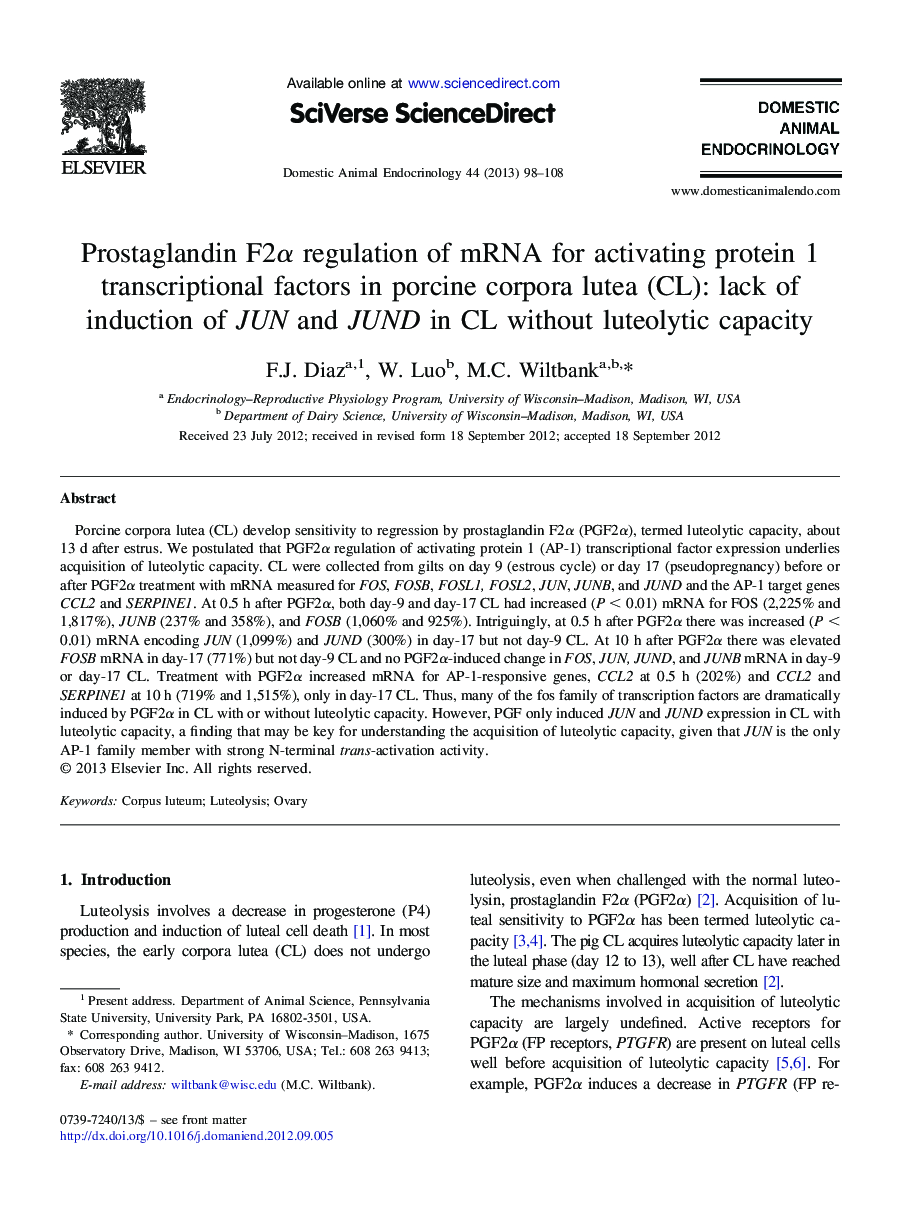| Article ID | Journal | Published Year | Pages | File Type |
|---|---|---|---|---|
| 2393703 | Domestic Animal Endocrinology | 2013 | 11 Pages |
Porcine corpora lutea (CL) develop sensitivity to regression by prostaglandin F2α (PGF2α), termed luteolytic capacity, about 13 d after estrus. We postulated that PGF2α regulation of activating protein 1 (AP-1) transcriptional factor expression underlies acquisition of luteolytic capacity. CL were collected from gilts on day 9 (estrous cycle) or day 17 (pseudopregnancy) before or after PGF2α treatment with mRNA measured for FOS, FOSB, FOSL1, FOSL2, JUN, JUNB, and JUND and the AP-1 target genes CCL2 and SERPINE1. At 0.5 h after PGF2α, both day-9 and day-17 CL had increased (P < 0.01) mRNA for FOS (2,225% and 1,817%), JUNB (237% and 358%), and FOSB (1,060% and 925%). Intriguingly, at 0.5 h after PGF2α there was increased (P < 0.01) mRNA encoding JUN (1,099%) and JUND (300%) in day-17 but not day-9 CL. At 10 h after PGF2α there was elevated FOSB mRNA in day-17 (771%) but not day-9 CL and no PGF2α-induced change in FOS, JUN, JUND, and JUNB mRNA in day-9 or day-17 CL. Treatment with PGF2α increased mRNA for AP-1-responsive genes, CCL2 at 0.5 h (202%) and CCL2 and SERPINE1 at 10 h (719% and 1,515%), only in day-17 CL. Thus, many of the fos family of transcription factors are dramatically induced by PGF2α in CL with or without luteolytic capacity. However, PGF only induced JUN and JUND expression in CL with luteolytic capacity, a finding that may be key for understanding the acquisition of luteolytic capacity, given that JUN is the only AP-1 family member with strong N-terminal trans-activation activity.
